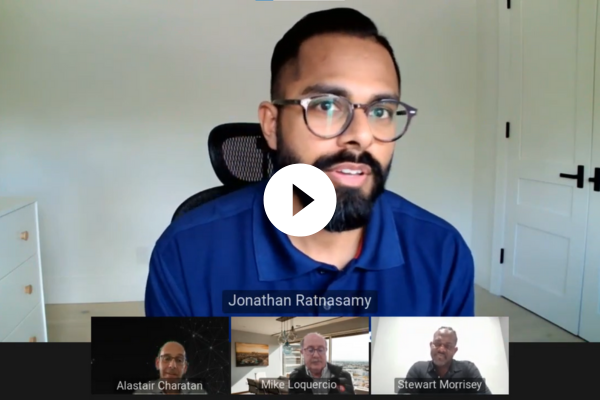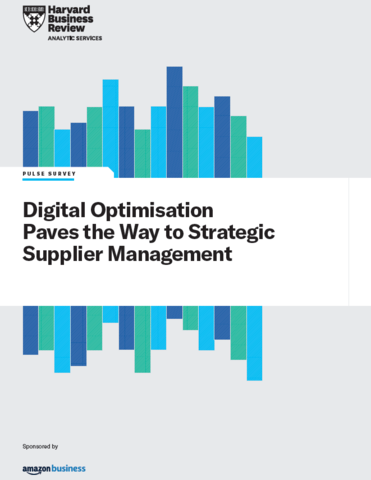Putting scope 3 emissions under the spotlight

Alex Saric at Ivalua explains why organisations are headed for a rude awakening on Scope 3 emissions
Over the next year, we will see organisations’ Scope 3 emissions – indirect emissions they are responsible for across the supply chain – put under intense scrutiny.
A wave of incoming regulations is set to make Scope 3 reporting compulsory for many businesses. In the UK, the FCA is proposing Sustainability Disclosure Requirements (SDR) in the finance industry. The European Commission is launching the first set of European Sustainability Reporting Standards (ESRS) by June 2023 as part of the CSRD. The SEC is proposing a rule to require public companies to provide more detailed climate reporting, including Scope 3 emissions.
The clock is ticking for organisations to improve their visibility into Scope 3 and get a handle on emissions outside of their own four walls. If they can’t, they risk facing fines, reputational damage, or loss of market share as customers flock to greener competitors. Organisations could also leave their brands vulnerable to accusations of greenwashing, unintentional or otherwise.
Scope 3 shouldn’t be a “finger in the air” measurement
It’s clear organisations must move fast to address emissions across the supply chain. But that’s easier said than done. Despite Scope 3 making up an average of 70% of a company’s emissions, more than half of UK organisations struggle with data quality and visibility into their suppliers.
This lack of basic visibility extends to sustainability data, making Scope 3 measurement virtually impossible without the right infrastructure in place. And without visibility, how can you accurately measure progress?
A recent report also warned that companies run the risk of greenwashing, after it found organisations viewed as climate leaders yet failing to support net-zero goals. The report found that the companies looked at would collectively reduce value chain emissions by only 15% by 2030. That’s much lower than the 43% the report claims are in alignment with 1.5C.
The report also explained that many companies often do not count all scope 3 emissions. This is because most suffer from inaccurate, incomplete, and unreliable supplier data that is dispersed in silos.
This data becomes more fragmented the further down the supply chain you go. Organisations typically have some visibility into their strategic or immediate suppliers but they often have virtually no insight into their sub-tier suppliers.
A lack of consistency on how regulations want firms to carry out Scope 3 reporting is also muddying the waters. Without a set of common reporting standards, environmental transparency is a struggle to implement at scale – especially for global organisations. This is because the specific data they will have to collect may vary from region to region, making it hard to create uniform data sets that can meet a growing variety of regulatory requirements.
Moving mountains (of data)
A good starting point for removing sustainability blind spots and understanding Scope 3 emissions is to create a single source of truth that measures environmental impact across the supply chain. This should draw on multiple data points from suppliers and other third parties relating to sustainability, greenhouse gas emissions and environmental footprint.
The challenge next is how to store, analyse and report using this data. The key to doing so is smart procurement technology. Traditionally, procurement tools have focused on working with suppliers on reducing costs and ensuring continuity of supply.
But today it’s possible to use advanced procurement tools to capture emissions data from suppliers and other sources and track the environmental impact of purchases from across the value chain down to the category and product level. This will give organisations a detailed view into their Scope 3 emissions.
Doing so enables organisations to gain a 360-degree view of their entire supply chain, bringing together supplier and third-party data into one place, making it easier to monitor and report on Scope 3 emissions.
Honesty is the best green policy
But that won’t be sufficient – organisations can’t just improve their visibility into Scope 3. They must also take action. Firms must ensure they are being transparent about their emissions progress. This means regularly measuring their environmental impact and tracking this against other sources of ESG (Environmental, Social, and Governance) data at scale.
Whether it’s third-party environmental risk scores, updates to regulation or public policies, or even the organisation’s published green targets. This information can be tracked to build a baseline that helps firms objectively measure progress on sustainability goals.
With near real-time insights into their own environmental impact, and a clear view of how this tracks against emissions targets, organisations can create ESG strategies that are transparent, actionable, timely, and sustainable for their business. What’s more, organisations can use this to avoid unintentional greenwashing, checking any goals set, statements made, or green claims are accurate.
These tools can also track year-to-date carbon emissions trajectories for purchases before organisations choose a particular provider or product. By factoring in emissions at the point of purchase, buyers can make more sustainable decisions and stay on track with sustainable goals.
Firms can also use Scope 3 data to identify suppliers with high emissions, and collaborate with them to reduce their environmental impact, or swap them out for a greener supplier. Organisations could also use this data to make strategic payment decisions, such as giving more favourable payment terms to greener suppliers as an incentive.
Scoping out a greener future
Without visibility into environmental impact and green goals, organisations have no way to truly hold themselves accountable, and are leaving themselves wide open to accusations of greenwashing. Nor can they effectively define and act upon improvement strategies to meet future targets.
As new regulations come into force that make tracking emissions across the supply chain essential, organisations need to transform their approach to procurement.
Armed with a single source of truth that includes data from immediate suppliers, sub-tier suppliers, and subcontractors – organisations can ensure green promises are not just surface-level, and drive continuous improvements to meet and exceed their ESG goals
Alex Saric is a smart procurement expert at Ivalua
Main image courtesy of iStockPhoto.com

Business Reporter Team
Most Viewed
23-29 Hendon Lane, London, N3 1RT
23-29 Hendon Lane, London, N3 1RT
020 8349 4363
© 2024, Lyonsdown Limited. Business Reporter® is a registered trademark of Lyonsdown Ltd. VAT registration number: 830519543





